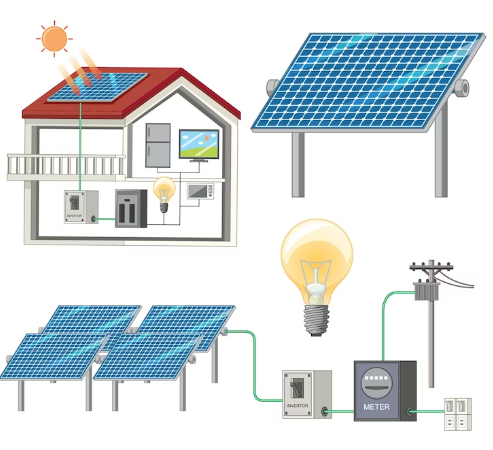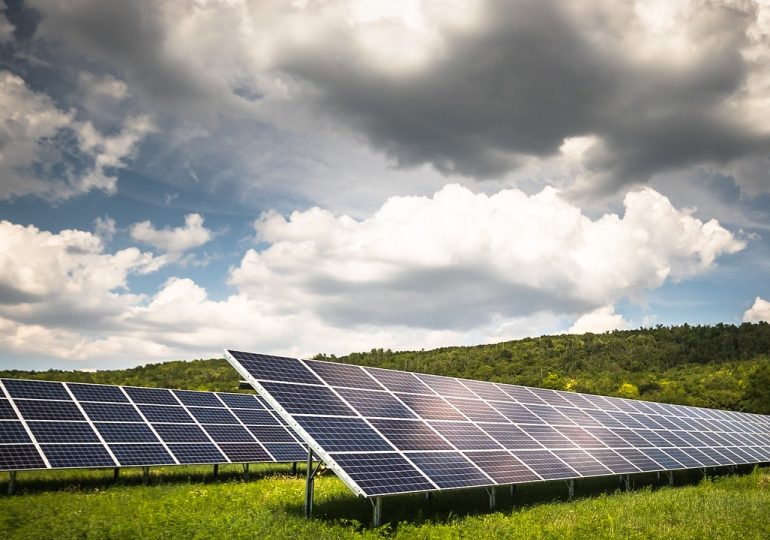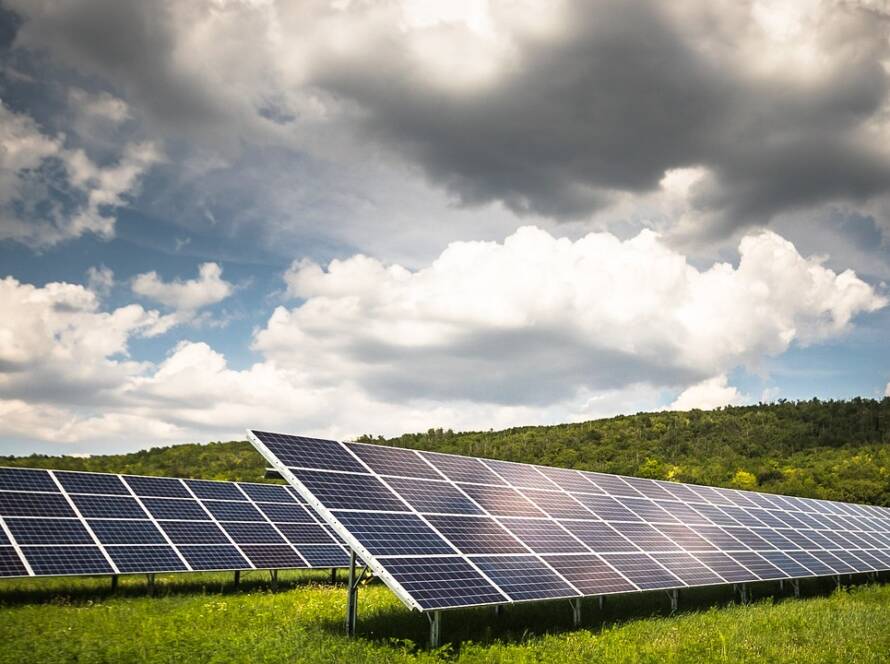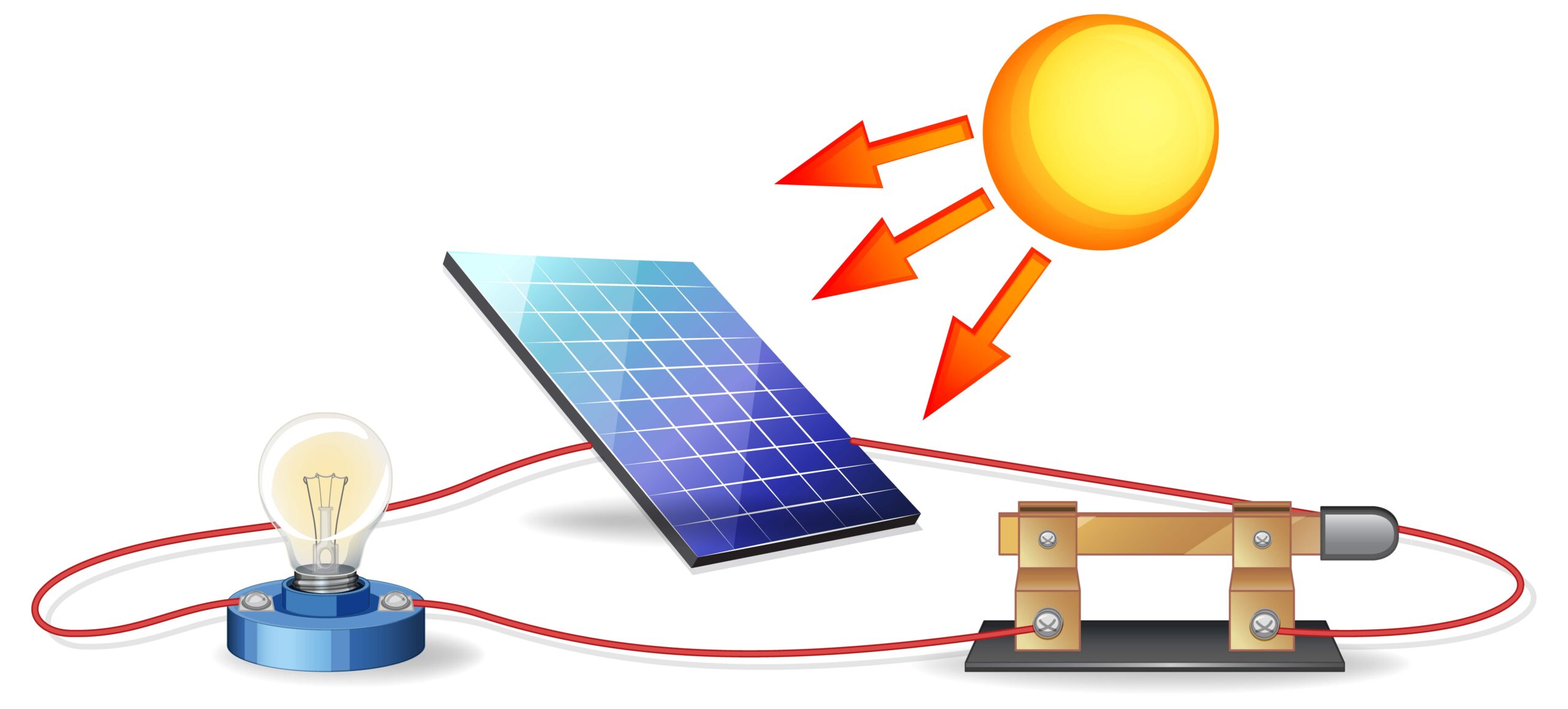The Science of Solar Energy: How Solar Panels Work
Solar panels have emerged as a leading renewable energy source available today. Understanding how solar panel work is key to appreciating their immense potential. They can generate electricity from sunlight into usable electricity, which is a clean and abundant source of energy. But how do solar panels actually work?
In this blog post, we will explain the science behind solar panels and how they convert sunlight into electricity. We will also discuss the different types of solar panels and how they are used.
How Does a Solar Panel Work?
Solar energy, widely recognized as a clean and renewable energy source, has the potential to power both residential and commercial establishments. It works by capturing the sun’s energy and converting it into electricity. Let us now understand the working of solar panels.
The sun emits photons, small units of energy, which travel to Earth at the speed of light. When these photons strike the semiconductor material in a solar cell, they dislodge electrons, creating an electric current. Solar panels consist of multiple solar cells made from silicon that convert sunlight into electricity through the photovoltaic effect. The cells are arranged in series and parallel configurations to ensure a usable voltage and current. The generated direct current (DC) electricity is converted into alternating current (AC) by an inverter, which is then used to power homes or businesses or sent back to the grid for credits or income through net metering.
Solar panels convert sunlight into electricity through the photovoltaic solar effect. This effect occurs when photons from sunlight strike the semiconductor material in a solar cell, knocking electrons loose. These electrons then flow through an electrical circuit, creating an electric current.

How Do Solar Panels Generate Electricity?
Let us now understand how electricity is generated by solar panels.
So, Solar panels generate electricity through a series of steps that involve the conversion of sunlight into usable electrical energy.
- Sunlight absorption: Solar panels consist of photovoltaic (PV) cells made of semiconductor materials such as silicon. When sunlight hits the solar panel, the PV cells absorb the photons (particles of light) from the sunlight.
- The semiconductor material creates an electric current. The semiconductor material in the solar cells is made up of two layers of material, one with a positive charge and one with a negative charge. When photons are absorbed by the semiconductor material, they knock electrons loose from the atoms in the material. These electrons then flow from the positive layer to the negative layer, creating an electric current.
- The electric current is converted to DC electricity. The electric current generated by the solar cells is direct current (DC) electricity. This implies that the electric current flows in a single direction only. However, most appliances and devices in our homes use alternating current (AC) electricity. To convert DC to AC, solar panels are connected to an inverter. The inverter converts the DC current to AC current, which can then be used to power our homes and appliances.
- Electricity serves as the energy source for your home or business. The AC electricity generated by the inverter is then used to power your home or business. You can use this electricity to run your lights, appliances, and other electronic devices, then switch back to the grid as needed.
- Surplus electricity is supplied back to the power grid. If you generate more electricity than you use, the excess electricity can be fed back into the grid. This is called net metering. You will receive credits for the excess electricity that you generate, which can be used to offset your electricity bill.
By following these steps, solar panels efficiently convert sunlight into usable electrical energy, providing a clean and renewable source of power for various applications. Embracing solar energy not only reduces reliance on fossil fuels but also contributes to a greener and more sustainable future.
The electricity generation capacity of a solar panel is contingent upon several factors:
including the amount of sunlight,
the efficiency of the solar cells,
and the size of the solar panel.
Do Solar Panels Work In Cloudy Or Rainy Weather?
Solar panels are known for their association with sunny and clear skies, but they can still generate electricity in cloudy or rainy conditions. While direct sunlight provides the highest efficiency, solar panels can also harness diffuse sunlight, which is scattered sunlight that reaches the Earth’s surface even on cloudy days.
Cloudy weather reduces the solar panel’s output, typically to around 20% of its maximum capacity. Rainy weather has a greater impact, as raindrops can partially block sunlight, leading to decreased energy production. Nevertheless, solar panels are designed to be durable and withstand various weather conditions, including rain.
Despite the reduced output, solar panels can still generate enough electricity to power some of your home’s energy needs during cloudy or light rainy weather. They continue to capture diffuse sunlight, contributing to your energy supply. Even on these days, you can rely on your solar panels to diligently harness the sun’s power and provide clean, renewable energy for your home or business.

Advantages Of Solar Energy
Solar energy offers numerous advantages that make it a highly favorable and sustainable choice for powering our world. Here are some key advantages of solar energy:
- Clean and environment-friendly: Solar energy is a clean and renewable source of energy, meaning it does not produce any greenhouse gases or other pollutants. This makes it a more sustainable option than fossil fuels, which are a major source of air pollution and climate change.
- Renewable and Sustainable: Solar energy is derived from the sun, an abundant and renewable source of power. As long as the sun continues to shine, we can harness its energy without depleting natural resources or causing significant harm to the environment.
- Cost Savings: While the initial installation cost of solar panels may be an investment, solar energy offers long-term cost savings. Once installed, solar panels can generate electricity for decades, reducing or eliminating electricity bills and providing a reliable source of energy.
- Minimal Maintenance: There are many uses of solar panels. It requires minimal maintenance. Regular cleaning and inspections ensure optimal performance and longevity, making solar energy a hassle-free solution.
- Durability and Reliability: Solar panels are built to withstand various weather conditions and have a long lifespan. They continue to generate electricity even in low-light or cloudy conditions, ensuring a reliable source of energy.
- Environmental friendly: They don’t create any noise pollution while generating electricity. This implies that installations are non-intrusive, whether they are in bustling urban areas or serene rural settings.
- Solar panels are highly secure as they are primarily composed of silicon sheets, posing no risk of photovoltaic cells leaking or emitting any hazardous toxins or fumes.
Solar energy offers a multitude of benefits that contribute to a more sustainable and resilient future. By harnessing the power of the sun, we can reduce our environmental impact, save on energy costs, and create a cleaner and more sustainable world.
Conclusion
Solar panels are a clean and renewable source of energy that can help you reduce your carbon footprint and save money on your energy bills. Solar panels operate by transforming sunlight into electricity, which can subsequently be utilized to supply power to your home or business.Through the photovoltaic effect, solar cells absorb sunlight and generate an electrical current, which is then captured and converted into usable energy. This source of power offers numerous advantages, including cost savings, environmental benefits, energy independence, and job creation.
FAQs
The photovoltaic effect denotes the mechanism by which solar cells convert sunlight into electrical energy. It involves the absorption of photons by semiconductor materials, generating an electric current as the electrons are excited and separated from their atoms.
Solar panels themselves do not have the capability to store energy. However, energy generated by solar panels can be stored in batteries or through other energy storage systems for later use.
Solar panels are known for their extended lifespan, usually lasting 25 to 30 years or even longer. By providing adequate maintenance and care, they can maintain high efficiency and continue generating electricity for several decades.
Solar panels require little maintenance. The most common maintenance task is cleaning the panels to remove dirt, debris, and dust, which can reduce their efficiency. Solar panels should be cleaned at least once a year, but more often if they are located in areas with a lot of dust or pollen. Periodic professional inspections can also help maintain optimal performance and longevity.
Solar panels have the capacity to power an entire home. The quantity required is contingent upon the energy usage of the household and the amount of sunlight accessible. Well-designed solar systems can fulfill the electricity requirements of residential properties.
Solar panels are specifically designed to withstand challenging weather conditions. Their durability allows them to endure extreme temperatures, strong winds, and hail. This robust construction ensures their longevity and reliable performance in diverse climates.

Ileen Kaur (Author)
Ileen Kaur is an exceptional content writer, bringing her expertise and creativity to the digital realm. With a passion for storytelling and a knack for crafting compelling narratives, she has the power to captivate audiences and leave a lasting impression.


